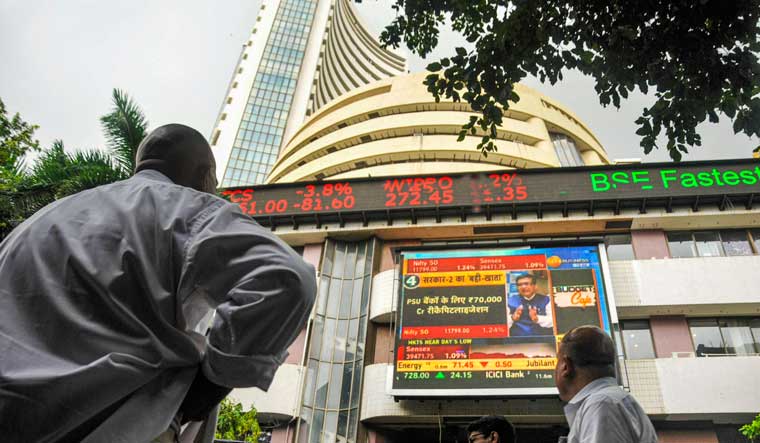This time last year, equity markets were booming. The BSE Sensex hit a life high of 62,245.43 on October 19, 2021. Since then, however, worries over inflation, rising global interest rates and possible recession in the developed world have reigned in the euphoria. In fact, over the past twelve months, the benchmark stock market index has gained just 0.32 per cent.
On Thursday, the Sensex declined 337 points or 0.6 per cent to close at 59,119.72 level after the US Federal Reserve raised interest rates by 75 basis points (0.75 per cent) for the third consecutive time, as it tries hard to control inflation running well above its comfort level.
With expectations of more rate hikes by the Fed, rising interest rates back home and lofty valuations, India’s equity market returns over the next one year may also remain weak, feel experts at BNP Paribas Securities India.
“The bond yield, currently around 7.2 per cent is now two per cent above the earnings yield, which indicates relative attractiveness of bonds over equities. Historically, at this level, next one year market returns have remained muted and warrant caution,” said Kunal Vora, Head of research at BNP Paribas Securities India.
“There are two possibilities – either a time correction or price correction. Over the next one year, we don’t really expect markets to give great returns. There is a risk to earnings estimates, valuations are very elevated,” he said.
As interest rates have risen in the US, there has been a huge sell-off by foreign institutional investors from Indian and other emerging market equities. Despite, foreign portfolio investors being net buyers in July, August and so far in September, in calendar 2022 they have been net sellers to the tune of Rs 1.50 lakh crore. Yet, India’s valuation premium to its Asian peers remains near an all-time high, noted BNP Paribas.
Wednesday’s 75 bps rate hike by the Fed, takes the federal funds rate up to a range of 3-3.25 per cent, the highest it has been since early 2008. The expectation is that it will raise interest rates further in the remaining two meetings in 2022. The sharp increase in interest rates comes in the backdrop of US inflation, which is running at multi-decadal highs. But, the rising interest rate has also stoked fears that the US economy will slip into a recession.
“Recessionary fears present a weaker backdrop for global risk assets, and the global outlook remains abnormally uncertain,” said BNP Paribas.
Apart from raising interest rates, the Fed, like other central banks, is also sucking up excess liquidity that had been pumped into the system during the pandemic years. Starting September, it's quantitative tightening (reducing its bond holdings) has increased to $95 billion a month from $47.5 billion earlier.
This tightening by central banks will have an impact on emerging market equities as investors would look to shift away from risky assets.
“A higher current account deficit along with potential FPI outflows will also keep the rupee under pressure,” said BNP Paribas. On Thursday, the rupee depreciated 90 paise to provisionally close at 80.86 to the US Dollar.
There are some bright spots for India, noted BNP Paribas. "For instance, India’s inflation is lower than in developed economies. Raw material costs have also cooled and this should ease the trade deficit. Goods and Service Tax (GST) collections have been robust at a three-year CAGR of 13 per cent and another normal monsoon this year, should keep food inflation in check," it added.
While some downside risks are emerging to India’s economic growth estimates, it is still expected to be better than many other markets.
“If you look at growth rates across geographies, in most developed markets we are seeing a sharp slowdown in growth. India is still standing out right now, with growth expectations upwards of 6 per cent,” noted Vora.
However, Indian markets will not be immune to global liquidity tightening.
“There is a reason to believe as the liquidity dries and interest rates are elevated, developed markets like US might look more attractive. They have also seen a price correction. In that scenario, Indian market, which is trading at high valuation seems vulnerable,” said Vora.
BNP Paribas is currently overweight on banking, IT services, pharma and telecom sectors. It is underweight on automobiles, consumer staples, durables and global cyclicals.





